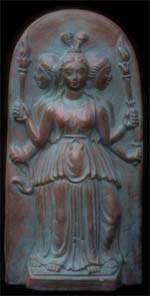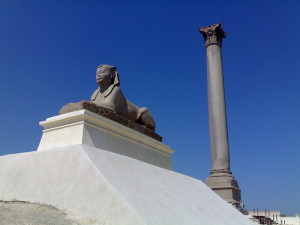The eagerly awaited anthology She Rises: Why Goddess Feminism, Activism and Spirituality?, edited by Helen Hye-Sook Hwang and Kaalii Cargill, was released this past Solstice (Summer or Winter, depending on your perspective) and I don’t exactly know what to say about it, except WOW. It certainly does not disappoint.
This is a hefty anthology of almost 500 pages. It has scholarly essays, stories of personal experience, poetry, and short inspirational paragraphs. The artwork–oh my Goddess the artwork. Get this one even if you don’t like to read books, just for the artwork. It’s deep and beautiful and transformative.
There are many contributors with names you may be familiar with, such as Carol Christ, Starhawk, Barbara Daughter, Vicki Noble, Max Dashu. Other excellent contributors will be new to you, but you may find yourself looking for more of their work. I feel honored to be included in such illustrious company. The articles are short, so they can be read over a long time period….though you might find it hard to put the book down. I was touched by how often the names Mary Daly, Merlin Stone, Marija Gimbutas, and Monica Sjoo appeared in this volume, and it seemed to me that these early pioneers were also contributing through other women.
This project grew out of a Facebook discussion. Someone–I think it was Helen Hwang–asked people to share why Goddess spirituality was important to them, and some amazing dialogue started, some of which was eventually posted on Return to Mago blog. Out of these and other contributions a whole anthology was put together by a team of volunteers.
From the book:
Coming from a culture where the divine has been described as a Caucasian male and anything opposite of that being evil, the need to see the divine in me offered a sense of empowerment and reclamation of who I am as an African Woman. To then research further and realize that the first divinity known on the planet looked like me, a black woman, brought this idea home full circle…..
–Iyanifa Ayele Kumari
The womb is infinitely more than a reproductive organ; it is a replica of the Cosmic Womb or Mago. From that profound pool of infinite silent knowledge, women can access the solutions so urgently needed to recover the equilibrium the world with its God spirituality has lost….
–Marie de Kock
…feminism without the Goddess does not reach far enough to change the root of our oppression, which is the control of women globally by our various faith traditions.
—Trista Hedren
For me, Goddess is completely different from God. Goddess means acceptance of the sacred WITHIN the physical instead of transcending the physical; acceptance of death and life as equally sacred; and the holiness of changing cycles…
—Annie Finch
She Rises can be purchased in ebook, black-and-white print, or color print through Amazon.com or Amazon UK. If you choose to get a print copy, Mago Books gets more money if you order from them.




